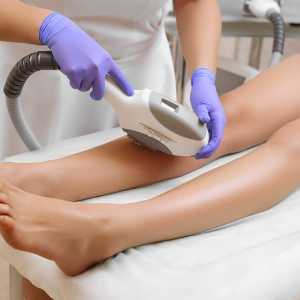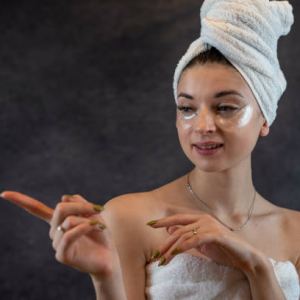Makeup application is an art that enhances one’s natural beauty and boosts confidence. Whether you are preparing for a typical day at work or a glamorous event, understanding the sequence of application, along with the right techniques, will make a remarkable difference in your final look. This guide is designed to break down makeup routines into simple, actionable steps, ensuring that anyone—from makeup novices to seasoned enthusiasts—can achieve professional and natural looks with ease.
Preparing Your Canvas: Skin Care and Priming
Before painting a masterpiece, an artist must prepare the canvas. Similarly, the key to a flawless makeup application begins long before the foundation touches your skin; it starts with a solid skincare routine. Cleansing your face to remove impurities and applying moisturizer tailored to your skin type will help establish a smooth base. A well-hydrated and clean face ensures that the makeup does not look cakey or uneven.
Once your skin is prepped, the next step is to apply a primer. This step is crucial as it not only smoothens out the skin’s texture but also helps makeup adhere better and last longer. Primers could also address specific skin concerns such as large pores, redness, or excess oil. Be sure to select a primary that complements your skin type—whether you’re looking for a mattifying effect, a dewy glow, or a color-correcting tint.

The Base: Foundation and Concealer Techniques
Achieving a perfect base is perhaps the most critical step towards a stunning makeup look. First, you need to find your holy grail foundation—one that matches your skin tone impeccably and provides your desired coverage level. Test samples along your jawline, not on your hand, because your face and hand skin tone could often be quite different.
Applying foundation correctly will keep the product from looking patchy or wearing off unevenly. You might use your fingers, a beauty sponge, or various foundation and concealer brushes for application. Remember that each tool can create a different effect, from sheer coverage using your fingers to more full coverage with stippling brushes.
Concealer is your best friend for hiding imperfections. For blemishes or redness, use a concealer that matches your foundation. For undereye circles, a slightly lighter shade will help to brighten the area. Color correcting with peach or green tones can neutralize the look of dark circles or redness before you layer on your concealer.
| Step | Description |
|---|---|
| 1 | Cleanse your face thoroughly to remove any dirt and oil. Apply moisturizer suitable for your skin type. |
| 2 | Choose a foundation that matches your skin tone. Apply it evenly across your face using a makeup sponge or brush. |
| 3 | Blend the foundation seamlessly into your skin, ensuring there are no visible lines or patches. |
| 4 | Use a concealer to cover any blemishes, dark circles, or imperfections. Dab it gently onto the problem areas and blend it in. |
| 5 | Set your foundation and concealer with a translucent setting powder to prevent creasing and ensure long-lasting wear. |
| 6 | Optional: Use a setting spray to lock your makeup in place and give your skin a natural, dewy finish. |
Enhancing Your Features: Contouring and Highlighting Basics
The art of contouring and highlighting can transform the structure of your face, adding dimension where needed. The key is to mimic natural shadows and the way natural light hits your face. For beginners, powder products could be more forgiving and easier to blend. Apply a darker shade to recede areas you’d like to slim or define, like under your cheekbones or along your jawline.
In contrast, highlighting brings forward certain features. Using a lighter, sometimes shimmering product, you’ll want to apply highlights to the high points of your face, such as the tops of your cheeks, the bridge of your nose, and your cupid’s bow. Select your contour and highlight shades wisely; for natural looks, they should only be a few shades darker or lighter than your foundation.
Adding Depth and Color: Eye Makeup Essentials
Eye makeup has the power to enhance and define your eyes, making them a focal point of your face. The journey to captivating eyes begins with an eyeshadow primer. The eyeshadow primer will help in creating a smooth canvas, and it will keep the shadow in place all day, preventing creasing. After primer application, move on to eyeshadow. Selecting your shades can be a delightful process as you choose the colors that best suit your look for the day.
When applying eyeshadow, using the right brushes is crucial for achieving the desired effect. Eyeshadow brushes vary in shape and size, each serving a different purpose, from precise lining to seamless blending. As a general guideline:
- Start with a flat brush to apply your base color.
- Use a blending brush to add your crease color and blend out any harsh lines.
Take your time to blend the colors; the goal is to have no visible borders between shades. Additionally, you can use a pencil brush for smudging eyeliner or applying precise amounts of color. After eyeshadow, eyeliner can help define the eyes further. Whether you prefer a winged look or something subtler, the type of eyeliner and the way you apply it can change the appearance of your eye shape. Lastly, a good coat of mascara will add the finishing touch by providing volume and length to your lashes.

Creating a Lasting Impression: Long-wearing Lipstick Tricks
Lips are the finishing touch to any makeup application, and a well-defined lip can make a bold statement or bring together a more neutral, everyday look. Start by choosing a lipstick shade that complements your overall makeup and skin tone. A good lip liner will define the edges of your lips and prevent the lipstick from bleeding. Apply lip liner first to outline the shape of your lips, then fill them in to create a base for the lipstick.
Applying lipstick can be simplified with these steps:
- Apply your chosen lipstick directly from the tube or with a lip brush for more precision.
- Blot with a tissue and then apply a second layer for increased longevity.
A lip brush can offer exquisite precision, and layering your lipstick will ensure it will last throughout the day. For added staying power, dust a little translucent powder through a tissue over your lips. This technique will set the lipstick and reduce the need for frequent touch-ups.
Setting Your Work: The Finishing Touches
After meticulously applying your makeup, it is essential to set it to ensure it stays put throughout your day or night. A light dusting of setting powder can mattify the skin and blur any small imperfections. If you prefer a dewy look, a setting spray may be your choice, as it helps to meld the makeup together with the skin for a more natural finish.
Setting sprays come in various formulations that can hydrate, mattify, or offer luminosity, and can also help in refreshing makeup throughout the day. Along with setting your base makeup, refining your eyebrows to frame your face is just as crucial. Use a pencil, powder, or pomade to fill in any sparse areas, following your natural brow shape for the most flattering look.
Everyday Makeup Vs. Special Occasion: Key Differences
The distinction between everyday makeup and that for a special occasion comes down to intensity, longevity, and intricacy. Daily makeup often tends towards more natural looks, with simpler eyeshadow application and a softer lip color. Conversely, makeup for special events often involves bolder colors, more precise techniques, and additional steps to ensure it will last for hours.
For those who wish to transition from a subdued day look to a vivid night look, here are some tips:
- Intensify your eyeshadow by layering darker shades or adding shimmery highlights.
- Switch to a bolder lip color or top your existing one with gloss for extra shine.
- Enhance your contour and highlight to define your features more dramatically.
Remember, makeup should be an enjoyable experience, so don’t hesitate to experiment with different styles to discover what works best for you.

Conclusion: Embrace Your Unique Beauty
The process of makeup application is a creative journey that allows for the expression of individuality. With these tips and techniques, you can craft a makeup look that is both personally satisfying and aesthetically pleasing. Building a routine and mastering the basics will enable you to develop skill and confidence. Being patient with yourself as you learn and adapt these steps to fit your style is key. Embrace your unique beauty, experiment with new looks, and remember that makeup is an art form meant to be fun and empowering.
Frequently Asked Questions (FAQs)
Q: How can I ensure my makeup lasts all day?
A: To ensure your makeup lasts throughout the day, start with a good primer and use setting powder or spray after you’ve finished applying your makeup. For lip color, apply in layers and blot between applications. Touch-up kits with pressed powder and lipstick can deal with any needed refreshments.
Q: Is expensive makeup always better than drugstore brands?
A: Not necessarily. Many drugstore brands offer high-quality products that compete with luxury brands. The key is to read reviews, test products, and find what works best for your skin and budget.
Q: What can I do if my foundation looks cakey?
A: If your foundation appears cakey, it may be due to applying too much product or not having a well-moisturized base. Use a damp beauty sponge to blend out excess foundation, and ensure your skin is hydrated before makeup application.
Q: How can I prevent my eyeshadow from creasing?
A: To prevent eyeshadow from creasing, use an eyeshadow primer before application. Choose high-quality shadows with good staying power, and consider using a setting spray to keep everything in place.
Q: Can makeup expire, and what are the signs?
A: Yes, makeup can expire. Signs of expired makeup include changes in texture, smell, and color. It’s essential to pay attention to the shelf life of your products, especially those used around sensitive areas like the eyes.




